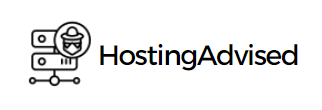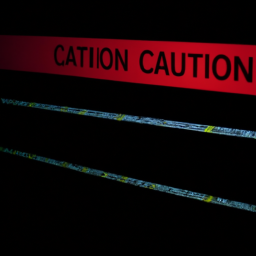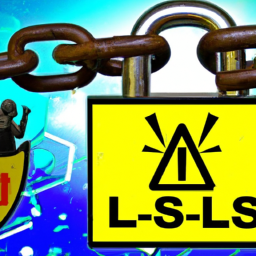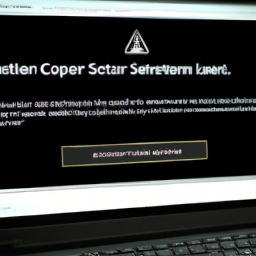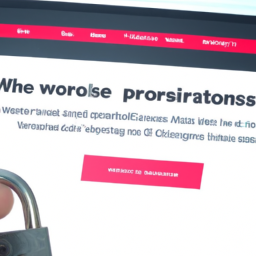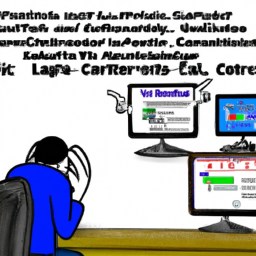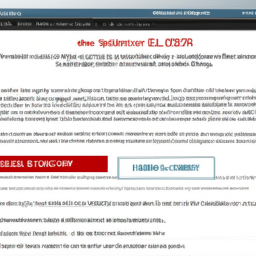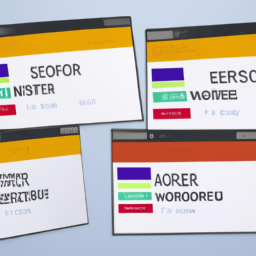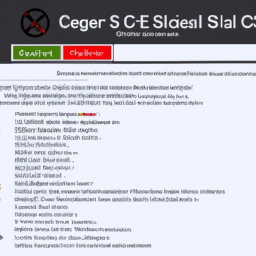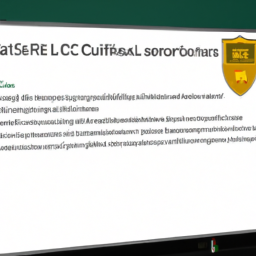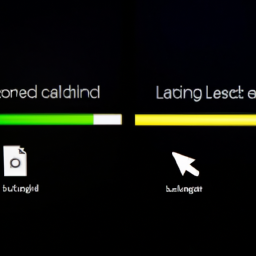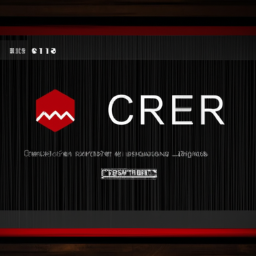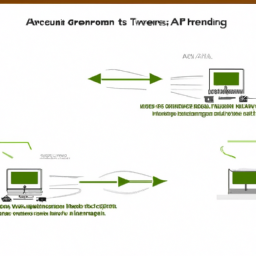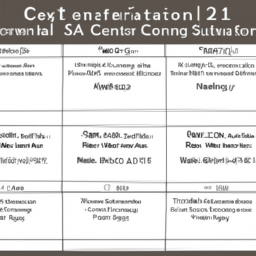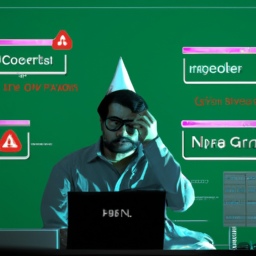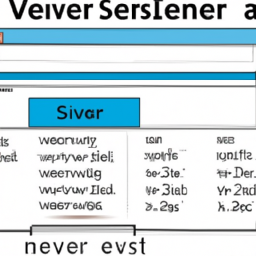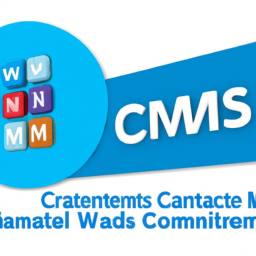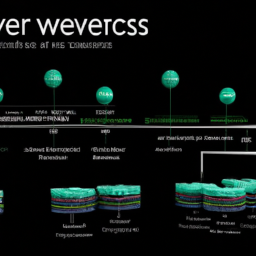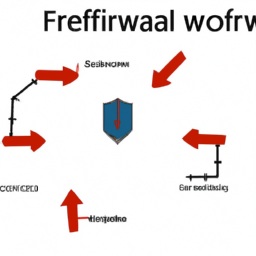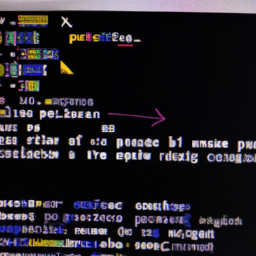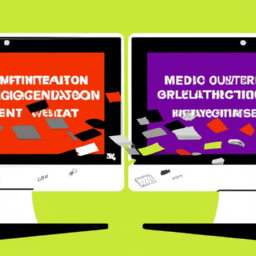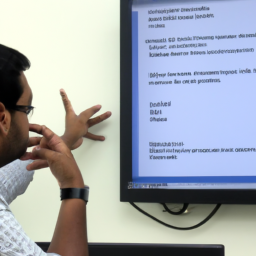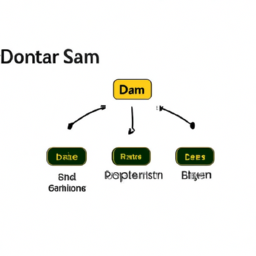Is your website at risk of SSL insecure content warnings? In today’s digital landscape, ensuring the security of your website is of utmost importance. As an online business owner or web developer, you must understand the potential risks associated with SSL insecure content and take proactive measures to mitigate them.
But what exactly are SSL insecure content warnings, and why should you be concerned about them? In this article, we will delve into the world of SSL security and explore the causes behind these warnings.
By conducting a thorough website audit and implementing best practices, you can protect your website and enhance user trust. So, let’s dive in and uncover the secrets to safeguarding your website from SSL insecure content warnings.
Key Takeaways
- SSL insecure content warnings can pose risks to website security and user trust.
- Conducting a website audit can identify vulnerabilities, such as mixed content, that need to be addressed.
- Fixing insecure content issues involves updating HTTP references to HTTPS and ensuring proper migration to HTTPS.
- Regularly monitoring and maintaining SSL security is crucial to identify potential risks and troubleshoot errors.
Understand the Importance of SSL for Website Security
You need to understand the importance of SSL for your website security.
SSL vulnerabilities can leave your website exposed to various threats, such as unauthorized access, data breaches, and information theft.
By implementing SSL certificate management, you can protect your website and ensure the secure transmission of sensitive data.
SSL certificates encrypt the communication between your website and its visitors, making it difficult for hackers to intercept and manipulate the data.
Moreover, SSL certificates establish trust with your users, as they indicate that your website is secure and trustworthy.
However, if you’re receiving SSL insecure content warnings, it’s essential to identify the causes behind them.
This will help you address any potential issues and ensure the continued security of your website.
Identify the Causes of SSL Insecure Content Warnings
Discovering the underlying factors behind the appearance of SSL insecure content warnings can shed light on potential vulnerabilities in your online platform. It’s crucial to be aware of the common mistakes that can trigger these warnings and the impact they can have on user experience. Here are three key factors to consider:
-
Mixed Content: When a secure webpage contains both secure (HTTPS) and insecure (HTTP) elements, browsers issue warnings. This can undermine the trust of users and compromise the security of their data.
-
Insecure Links or Resources: Including links or resources from external websites that aren’t secure can also trigger SSL insecure content warnings. These unsecured elements can leave your website open to attacks and compromise user trust.
-
Incorrect SSL Certificate Installation: If your SSL certificate isn’t installed correctly or has expired, browsers may flag your website as insecure. This can deter users from visiting your site and harm your online reputation.
Understanding these factors will help you conduct a website audit for insecure content and ensure a secure browsing experience for your users.
Conduct a Website Audit for Insecure Content
Conducting a website audit can unveil potential vulnerabilities and ensure a secure browsing experience for users. One crucial aspect to assess during this audit is the presence of website vulnerabilities, such as mixed content.
Mixed content occurs when a website served over HTTPS also includes insecure HTTP resources, such as images, scripts, or stylesheets. These mixed content elements pose a significant risk as they can be exploited by attackers to manipulate or intercept data transmitted between the website and its visitors.
By identifying and addressing these insecure elements, you can mitigate the risk of SSL insecure content warnings and protect your website and its users from potential threats.
Transitioning into the subsequent section about fixing insecure content issues, let’s explore effective strategies to resolve these vulnerabilities.
Fix Insecure Content Issues
Addressing insecure content issues is essential for ensuring a secure browsing experience and safeguarding sensitive data transmitted between a website and its visitors. One common issue is mixed content errors, where a webpage is loaded over HTTPS, but some elements, such as images or scripts, are loaded over HTTP. This can lead to warnings and potential security vulnerabilities.
To fix this, you need to identify and update all HTTP references to HTTPS. This includes updating internal links, external resources, and embedded content. Additionally, ensure that all your website pages are properly migrated to HTTPS, including redirects from HTTP to HTTPS.
By resolving these insecure content issues and implementing best practices for SSL security, you can provide a safer environment for your website visitors and protect their data.
Transitioning into the subsequent section, let’s now explore how to implement these best practices for SSL security.
Implement Best Practices for SSL Security
To ensure the highest level of SSL security for your website, it’s crucial to renew your SSL certificates regularly.
This will help prevent any potential vulnerabilities or weaknesses that may arise over time.
Additionally, enabling HTTP Strict Transport Security (HSTS) will ensure that all communication between your website and the user’s browser is encrypted, further enhancing the security of your site.
Lastly, implementing Content Security Policies (CSP) will add an extra layer of protection by specifying which content sources are considered safe, reducing the risk of malicious attacks or unauthorized access.
Renew SSL Certificates Regularly
Make sure you’re regularly renewing your SSL certificates to avoid any potential risks with your website. As the saying goes, "An ounce of prevention is worth a pound of cure." Failure to renew SSL certificates can lead to expired certificates, which can trigger SSL insecure content warnings on your website. These warnings can deter visitors and potentially expose your website to security vulnerabilities.
To prevent this, set up renewal reminders and make sure to renew your SSL certificates before they expire. By doing so, you’ll ensure that your website maintains a secure connection and avoids any potential issues. Additionally, regularly renewing your SSL certificates demonstrates your commitment to website security.
Now, let’s move on to the next step: enabling HTTP Strict Transport Security (HSTS) for enhanced protection.
Enable HTTP Strict Transport Security (HSTS)
Take your website security to the next level by enabling HTTP Strict Transport Security (HSTS). This will ensure an ironclad protection that will give your visitors peace of mind. HSTS adds an extra layer of security by forcing web browsers to establish a secure HTTPS connection with your website. This prevents hackers from intercepting sensitive information during transmission.
In addition to enhancing security, enabling HSTS can also increase website performance. By eliminating the need for browsers to make unnecessary HTTP requests, HSTS reduces latency and improves load times.
However, it’s important to note that enabling HSTS can potentially lead to browser compatibility issues if not implemented correctly. Therefore, it is crucial to thoroughly test your website after enabling HSTS to ensure compatibility across different browsers.
Implementing content security policies (CSP) is the next step to further strengthen your website’s security.
Implement Content Security Policies (CSP)
Enhance the security of your website by implementing Content Security Policies (CSP), fortifying your defenses against potential attacks and ensuring a safe browsing experience for your visitors.
CSP implementation benefits are numerous. By defining and enforcing a set of rules for resource loading, you can mitigate the risks of cross-site scripting (XSS) attacks and data injection. CSP allows you to control which resources are loaded on your website, reducing the chances of malicious content being executed. It also prevents the loading of insecure content, such as HTTP resources on an HTTPS site, thereby avoiding mixed content warnings.
However, implementing CSP can present challenges. Configuring the policies correctly requires a deep understanding of your website’s structure and dependencies. Additionally, any errors in the policy can potentially break the functionality of your website.
To ensure continued security, monitoring and maintaining your SSL security is crucial.
Monitor and Maintain SSL Security
Ensuring the safety of your website is like tending to a delicate garden, where monitoring and maintaining SSL security is the key to keeping the blooms of protection in full bloom.
By regularly monitoring SSL vulnerabilities, you can identify potential security risks and take proactive measures to address them. This involves regularly checking for any SSL certificate expiration dates and promptly renewing them to avoid any downtime or security breaches.
Additionally, troubleshooting SSL errors is crucial in maintaining a secure connection. This includes identifying and resolving any mixed content warnings, which occur when a website contains both secure (HTTPS) and insecure (HTTP) content. By promptly addressing these errors, you can ensure that your website remains secure and trustworthy for your users.
Frequently Asked Questions
How can I check if my website has insecure content warnings?
To check if your website has insecure content warnings, you need to focus on website security and content validation.
Ensure that all your website’s content, including images, videos, and scripts, are served securely over HTTPS.
Use tools like SSL/TLS certificate checkers and browser developer tools to identify any insecure content.
Regularly validate your website’s HTML, CSS, and JavaScript to fix any security vulnerabilities.
This will help ensure a secure browsing experience for your users.
What are the potential consequences of ignoring SSL insecure content warnings?
Ignoring SSL insecure content warnings can have severe consequences for your website. By disregarding these warnings, you risk negatively impacting user trust. Users may become wary of visiting your site, leading to a decline in traffic and potential loss of customers.
Additionally, ignoring these warnings can leave your website vulnerable to attacks, resulting in the potential loss of sensitive data. It’s crucial to address these warnings promptly to maintain the security and reputation of your website.
Are SSL insecure content warnings only relevant for e-commerce websites?
SSL insecure content warnings are not only relevant for e-commerce websites. Any website that collects user information or allows users to log in is at risk.
These warnings indicate that the website is not secure, which can lead to data breaches and compromised user information. To fix these warnings, non-commerce websites should ensure that all resources, such as images and scripts, are loaded over HTTPS.
This will protect user data and provide a secure browsing experience.
Can SSL insecure content warnings affect my website’s search engine rankings?
SSL insecure content warnings can have an impact on your website’s search engine rankings. When users encounter these warnings, it negatively affects their experience and may cause them to leave your site.
To fix SSL insecure content warnings, you should ensure that all resources on your website, such as images and scripts, are loaded securely over HTTPS. Additionally, you should update any hardcoded HTTP links to HTTPS and use content security policies to prevent mixed content issues.
Is it possible for a website to have both secure and insecure content simultaneously?
Yes, it’s possible for a website to have both secure and insecure content simultaneously. This is known as mixed content. It can have implications for user trust and website credibility.
When visitors see insecure content warnings on your site, they may perceive it as untrustworthy and potentially harmful. To address this issue, you should ensure that all content on your website is served securely. This can be done by using HTTPS for all elements on your site and fixing any insecure links or resources.
Conclusion
To ensure the security of your website, it’s crucial to understand the importance of SSL and address any insecure content warnings.
By conducting a thorough website audit and fixing any issues, you can protect your site from potential vulnerabilities.
Implementing best practices for SSL security and regularly monitoring and maintaining it will further enhance your website’s safety.
Don’t risk the security of your valuable data – take action now to secure your website with SSL.
